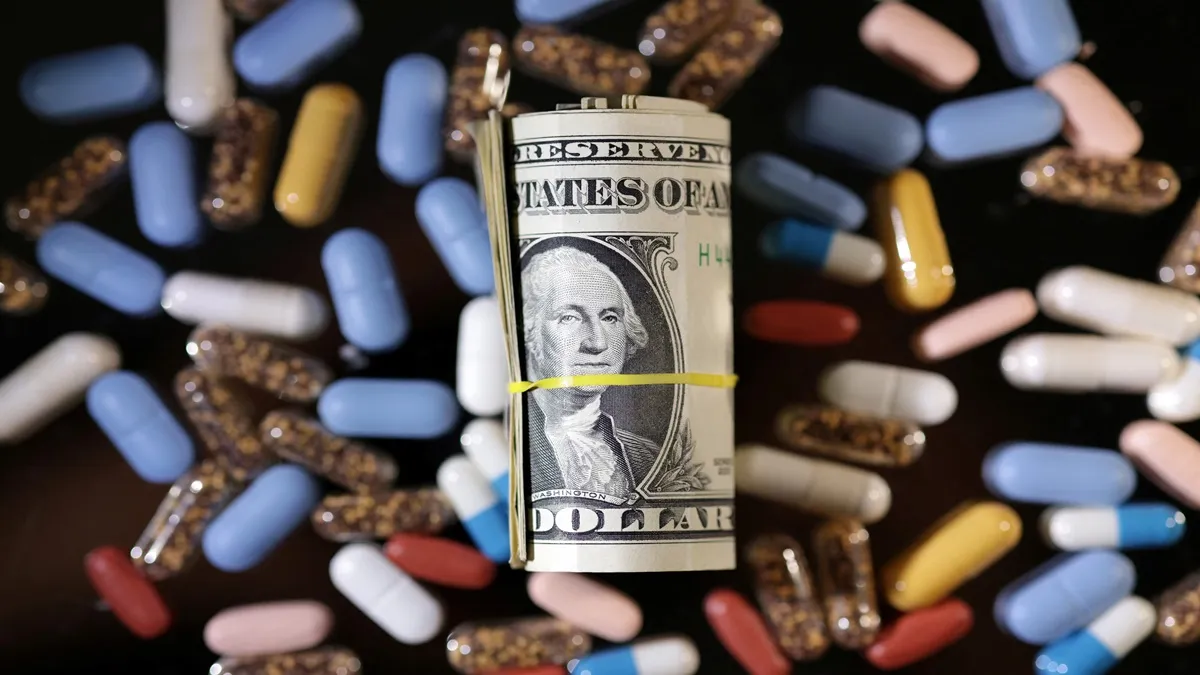- Courses
- GS Full Course 1 Year
- GS Full Course 2 Year
- GS Full Course 3 Year
- GS Full Course Till Selection
- Online Program
- GS Recorded Course
- NCERT (Recorded 500+ Hours)
- Polity Recorded Course
- Geography Recorded Course
- Economy Recorded Course
- AMAC Recorded Course
- Modern India, Post Independence & World History
- Environment Recoded Course
- Governance Recoded Course
- Science & Tech. Recoded Course
- International Relations and Internal Security Recorded Course
- Disaster Management Module Course
- Ethics Recoded Course
- Essay Recoded Course
- Current Affairs Recoded Course
- CSAT
- 5 LAYERED ARJUNA Mentorship
- Public Administration Optional
- ABOUT US
- OUR TOPPERS
- TEST SERIES
- FREE STUDY MATERIAL
- VIDEOS
- CONTACT US
Impact of U.S. Drug Price Cuts on Indian Pharma
Impact of U.S. Drug Price Cuts on Indian Pharma
15-05-2025

Introduction
- Recently, the U.S. President announced that he will sign an order to lower the prices of prescription medicines up to 30 to 80% in the United States.
- A U.S. government report showed that drug prices in the U.S. were 2 to 4 times higher than in countries like Australia, Canada, and France in 2021.
- US President plans to bring back Most Favored Nation (MFN) policy.
What are Prescription Drugs?
- Prescribed by a doctor.
- Bought at a pharmacy.
- Prescribed for and intended to be used by one person
- Approved by the Food and Drug Administration (FDA) through a process called NDA (New Drug Application), which checks if the drug is safe, works well, and is made properly using tests on animals and people.
What is the Most Favored Nation (MFN) Policy?
- The US Government’s Most Favored Nation (MFN) drug pricing policy is a plan to lower the cost of some medicines in the United States.
- The plan is to make Medicare pay the same low prices for medicines as rich countries like Canada, Germany, and the UK pay. This will help lower the costs for Medicare and the people who use it..
- The policy was first suggested by U.S President in 2020 during his first term.
- It was stopped by legal challenges from drug companies, and later cancelled by the US administration.
- The payment will be based on the lowest price that rich countries pay, after adjusting for how much medicine they use/buy and the size of their economy.
What is Medicare in USA?
- Medicare is a federal health insurance program in the United States that provides coverage for individuals aged 65 and older, as well as younger individuals with certain disabilities or conditions.
Why are Drug Prices so High in the United States?
-
No Government Price Negotiation: The drug market in the U.S. is operated as fragmented system where companies negotiate with individual insurers or Pharmacy Benefit Managers (PBMs).
- R&D Costs and Profit Motives: Developing new drugs is expensive, because It is estimated that each new drug can cost between $ 1 to 2 billion to develop. Companies say they charge high prices to cover the cost of making new drugs, but they also focus on making money for their investors, which can make prices even higher.
- Complex Supply Chain: Middlemen like PBMs and insurance companies make discount deals to help set drug prices, but process is not so much transparent which led to higher drug prices.
- Patents and Market Exclusivity: Patents give drug companies the right to sell their medicine without competition for many years, keeping prices high. Even after the patent ends, they sometimes make small changes to the drug to keep their control and delay cheaper versions.
- High Demand and Inelastic Pricing: People need life-saving or important medicines irrespective of the cost. Considering this the companies charges very high prices for these medicines.
- Administrative Costs: The U.S. healthcare system’s complexity, with high administrative overhead, indirectly contributes to higher drug costs compared to single-payer systems elsewhere.
What has Changed since Then?
- The Inflation Reduction Act was passed in 2022. This law now allows Medicare to negotiate the prices of some medicines. This change may now allow the US government to bring back his MFN policy.
What could Happen If the Policy is Implemented?
- The government could save a lot of money. In 2020, it was estimated to save $85 billion in seven years.
- It has been expected to drug prices may fall by 59% to 90%.
- It may limit access to some drugs if companies choose not to sell them at lower prices.
- The pharmaceutical industry is expected to fight against this policy in court again.
What are the Impact on Indian Pharmaceutical Industries?
- The United States is India’s biggest market for exporting medicines. About one-third of India’s pharma exports go to the U.S.
- Since the U.S. imports a large amount of medicines from India, any price cuts in the U.S. market could negatively affect India’s pharmaceutical exports.
- India exported medicines worth around $ 9 billion to the U.S in 2023.
- Indian pharmaceutical (pharma) stocks fell by 1.6%, even though the overall Indian stock market went up after this announcement.
- It can reduce the profits for Indian pharma companies. If medicine prices are cut in the U.S., Indian companies will earn less from selling their products there.
- Investors may stay worried, and stock prices of Indian pharma companies could drop further.
- Lower prices mean companies will earn less, so they may not want to invest in making new generic medicines.
- If industry profits go down, pharmaceutical companies may reduce hiring or cut jobs.
- Indian pharma companies may try to export more in other countries like those in Europe, Latin America, or Africa.
Conclusion
The U.S. government wants to reduce drug prices by matching them with the lowest prices paid in other countries. If successful, it could help save a lot of money for American citizens and the government. However, pharmaceutical companies may oppose the move in court. The success of this plan will depend on how well it is implemented and whether it overcomes legal and industry resistance.
|
Also Read |
|
UPSC Foundation Course |
|
| UPSC Monthly Magazine | CSAT Foundation Course |



